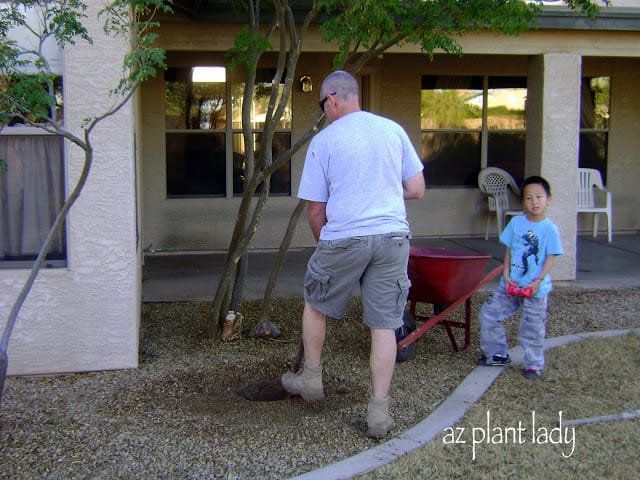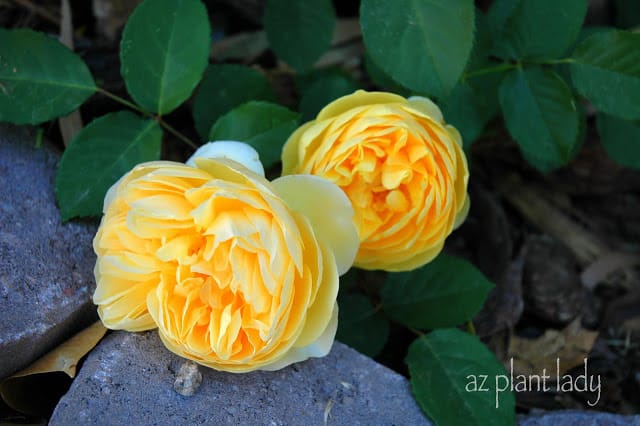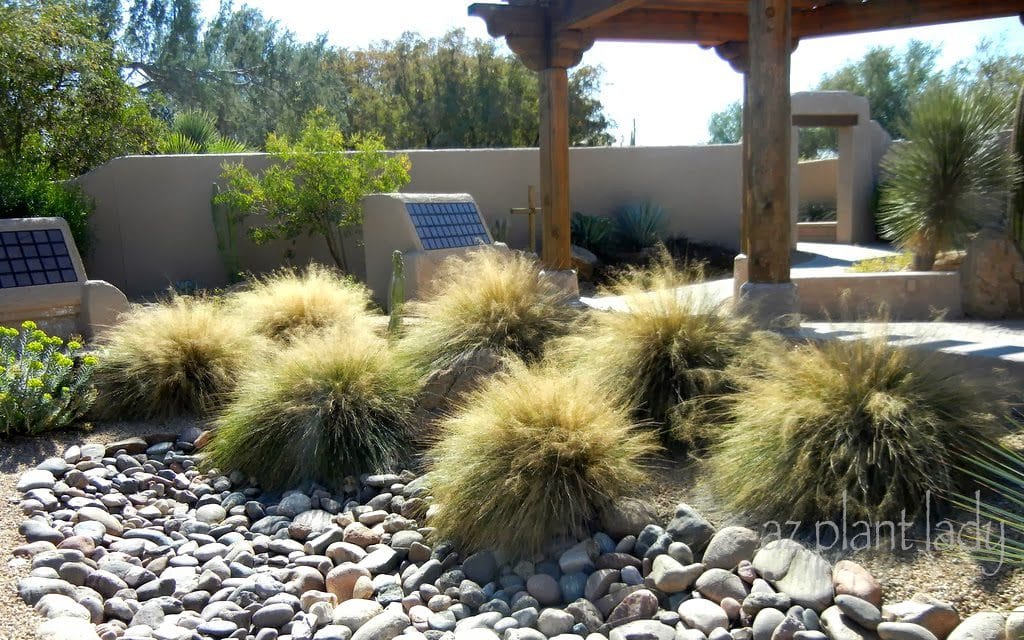
When most people think of a ‘sustainable landscape’, they view one that is boring, filled with few plants which is why they are often surprised to see how beautiful they are.
Over the past couple of weeks, we have talked about small steps that you can take toward a more sustainable landscape and today, we will finish up our series with a few more steps you can take in your own garden.
Re-think what you plant in pots.
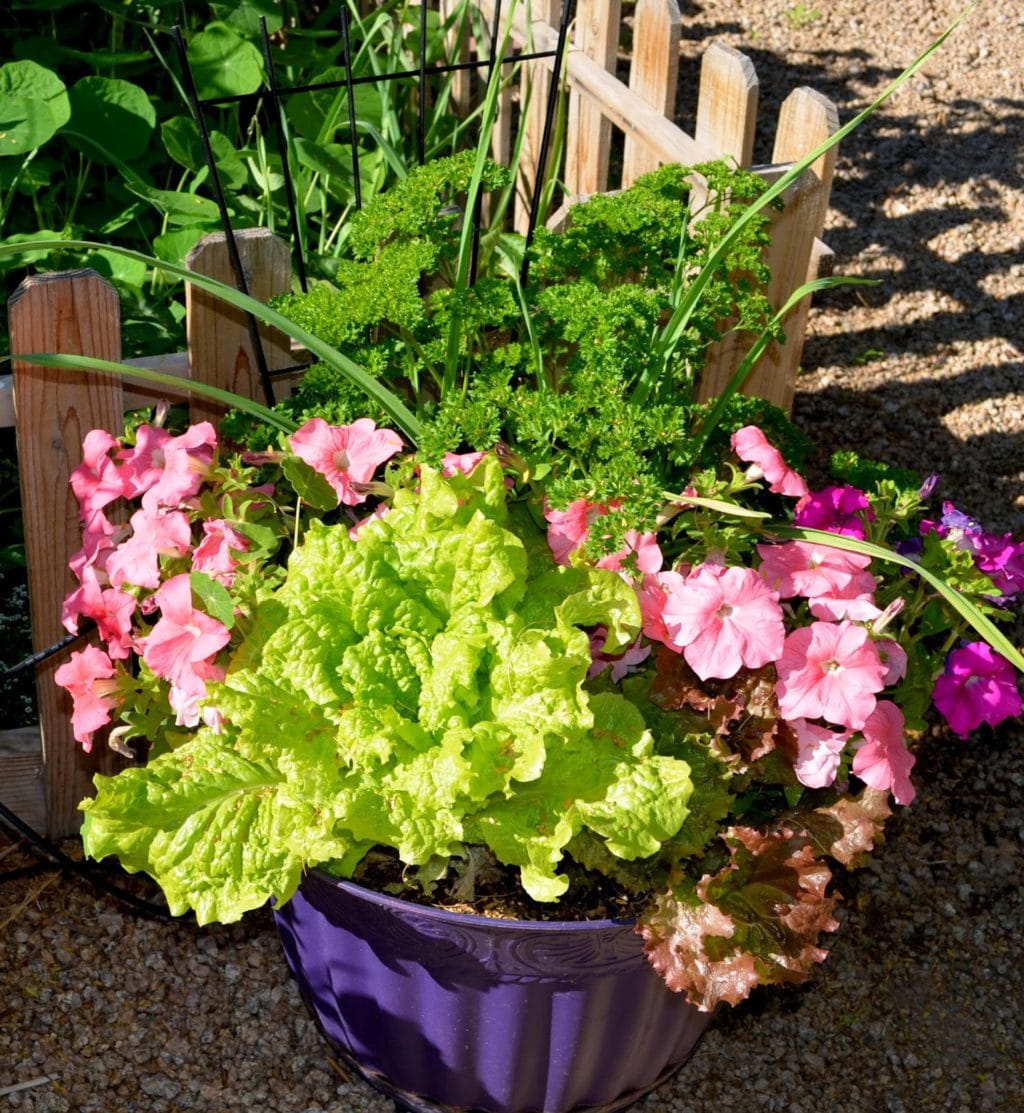
Leaf lettuce, garlic, parsley growing along side petunias.
If you are like most people, you have a few pots that you fill with flowering annuals, which you fertilize on a semi-regular basis.
But, how about thinking outside of the box about what we add to pots.
For example, did you know that many vegetables do great in pots and are also attractive? I like to grow vegetables in my pots and add a couple of annual flowers in for a little color.
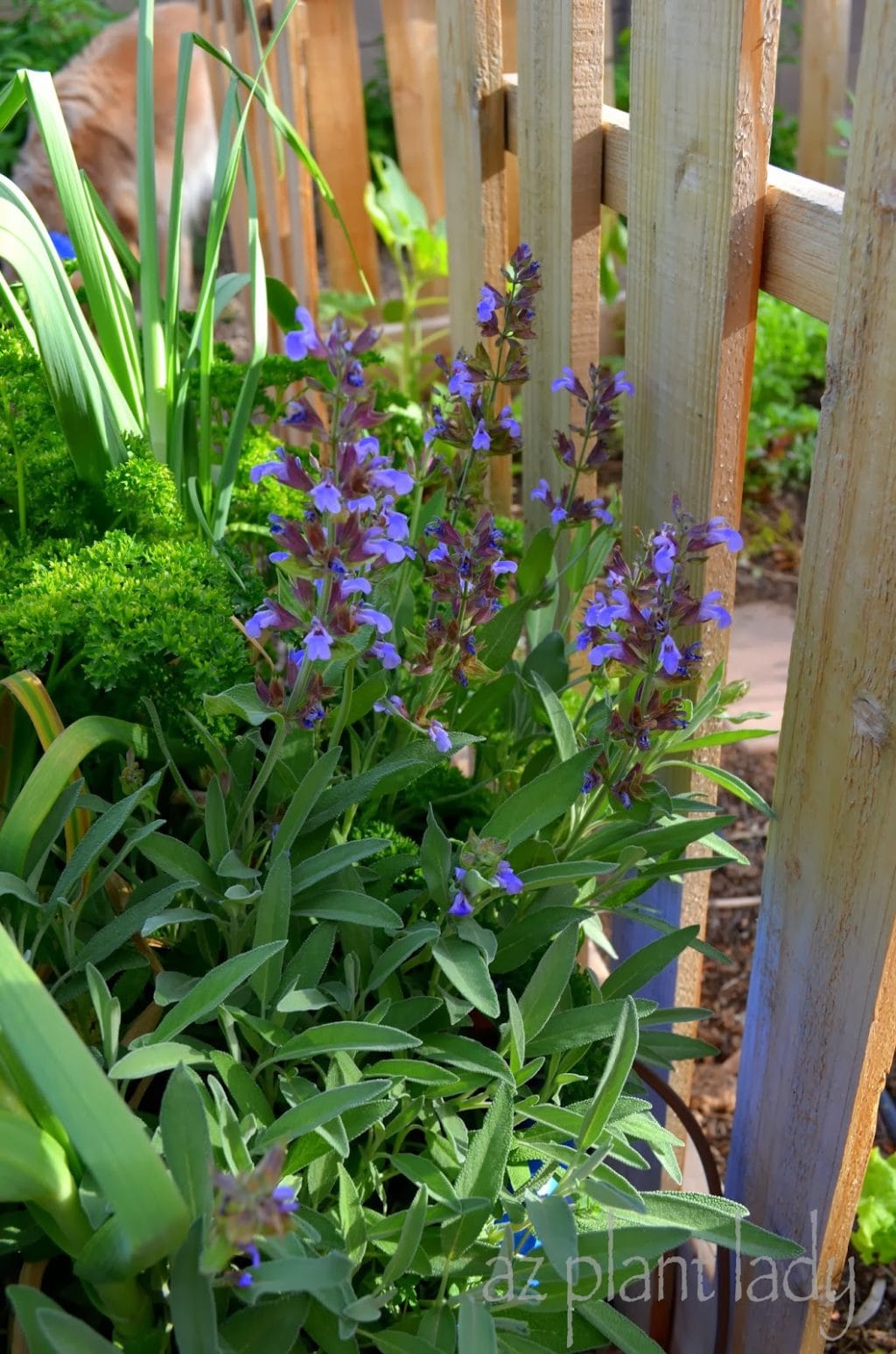
While some flowering annuals can be a bit fussy (pansies, for example) – herbs are not. They look great in pots, are on hand whenever you need a bunch of fresh herbs for cooking and they don’t need as much water and fertilizer as flowers.
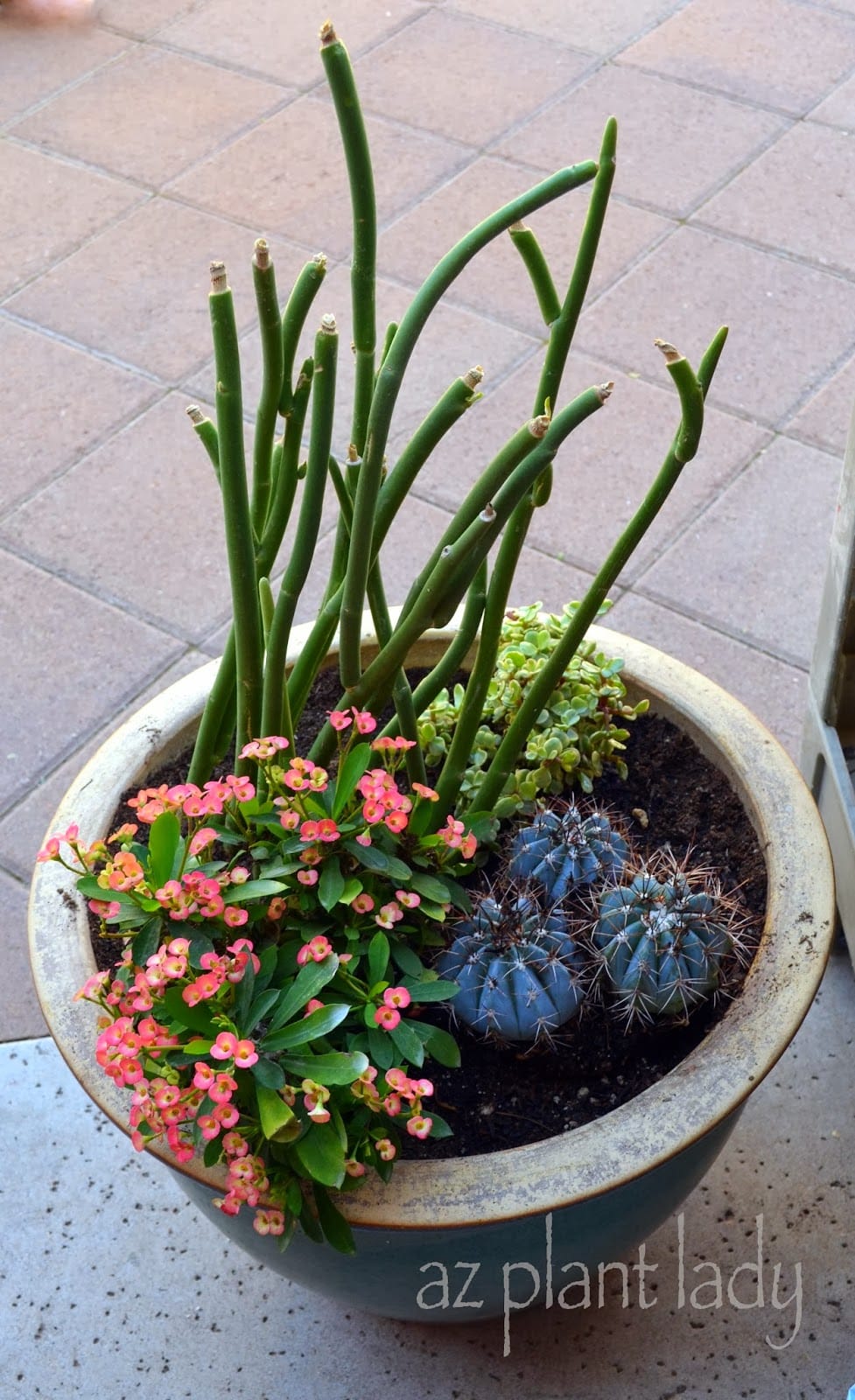
Crown-of-Thorns, Lady’s Slipper, Elephant’s Food and a cactus.
Succulents make beautiful pots with their varied textures. Because the store water inside, they do not need as much water as other container plants.
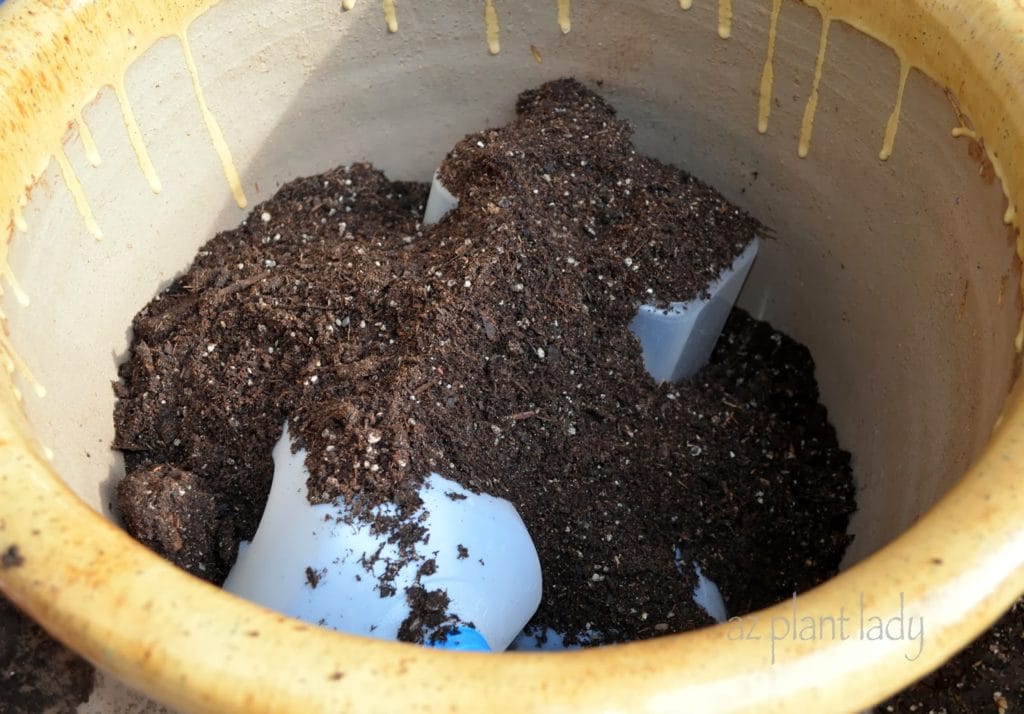
A helpful tip for planting a large container – fill the bottom third with recyclable plastic bottles. Most plant’s won’t reach to the bottom of large containers and it is a waste of money to fill up the entire pot with expensive potting soil. Another bonus is that it also makes your pot a bit lighter.
Use natural or recycled materials when possible.
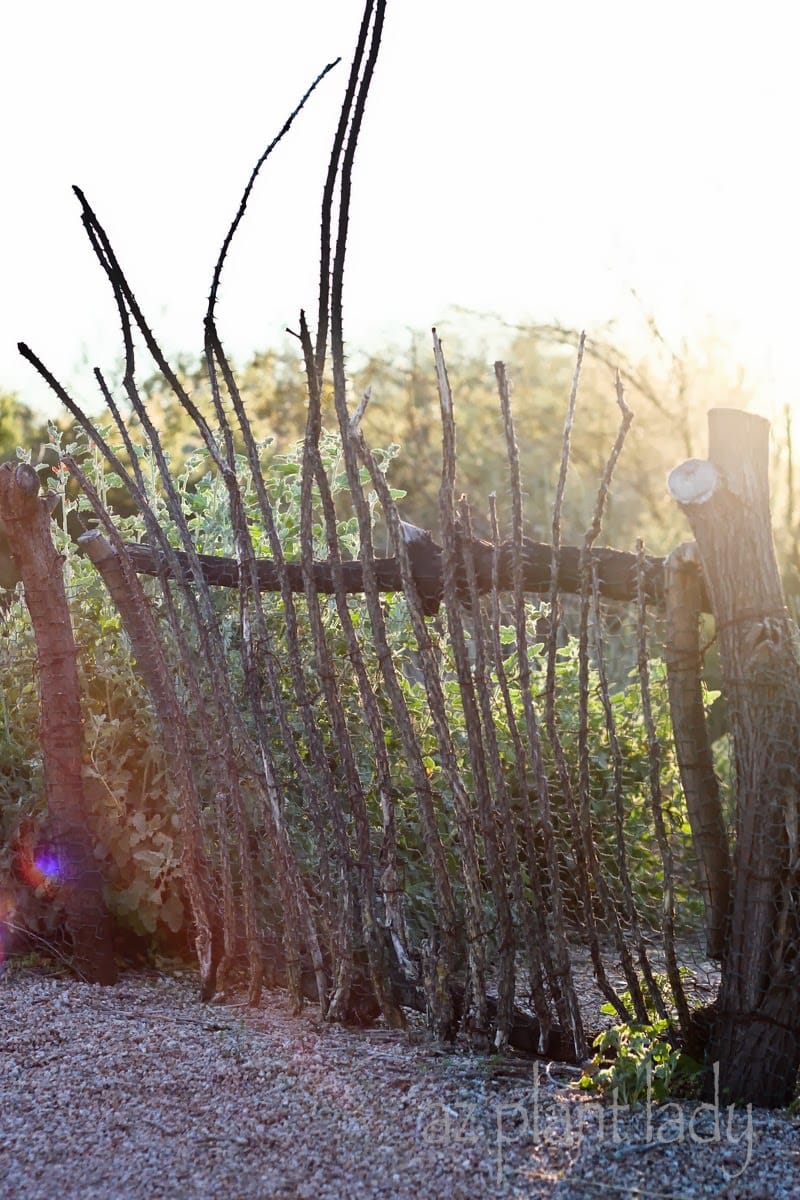
Gate made from old Ocotillo canes and tree branches.
Often, when we are adding elements to our landscape, we overlook the many things that are recycled or natural that can fill that need.
For example – did you know that you can create a ‘living’ fence made from Ocotillo canes? It’s true! I have seen them my local nursery.
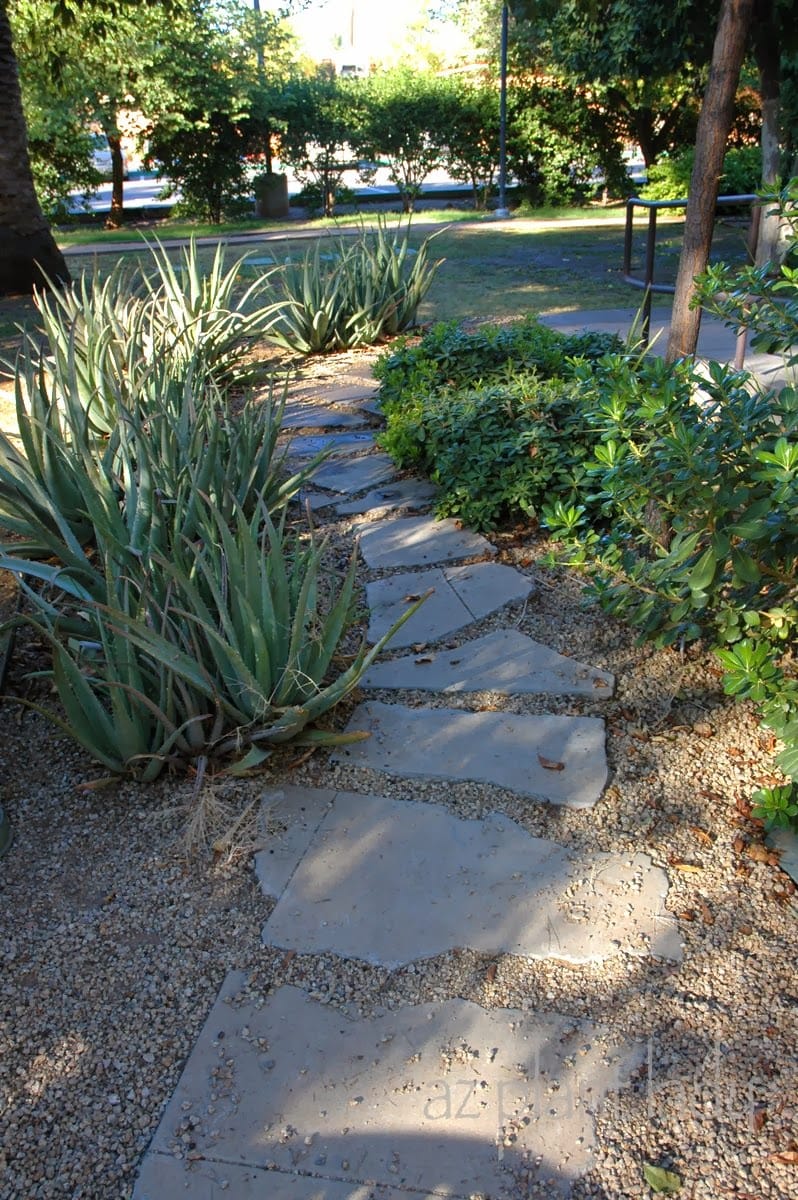
Pathway made from recycled, broken concrete.
If your landscape needs a path – instead of buying new pavers or step stones, use recycled, broken concrete. Or use natural stone products like flagstone.
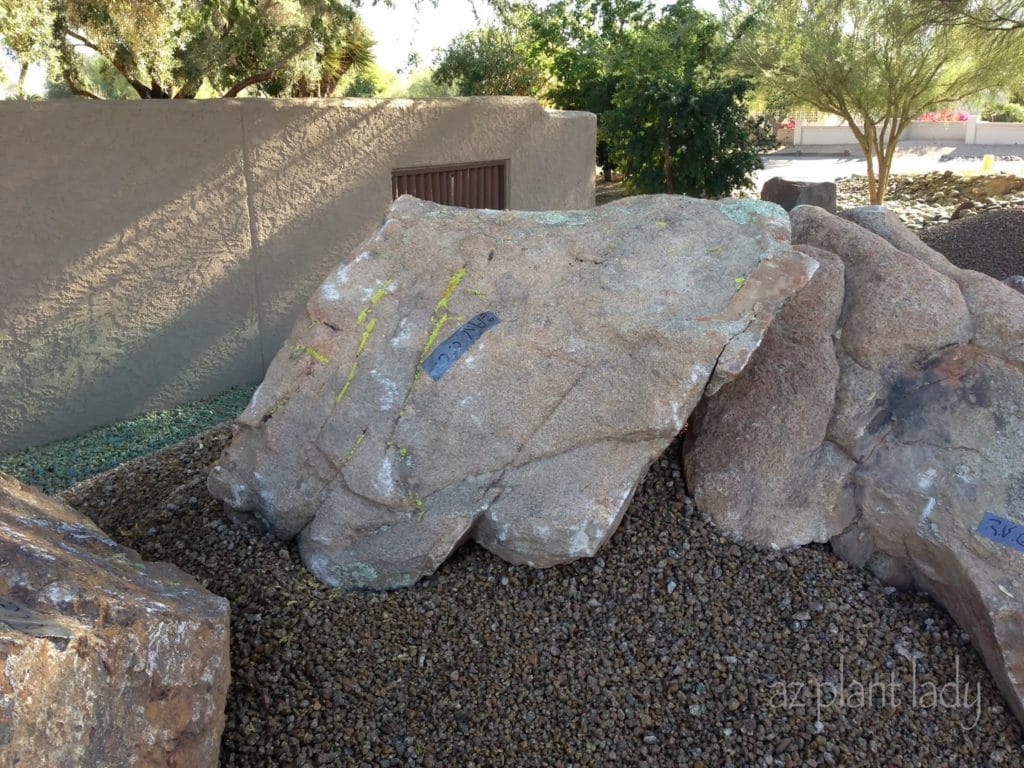
It is hard to overstate how boulders can help a landscape go from ‘okay’ to ‘fabulous’.
Boulders add both height and texture without needing any water or pruning. In addition, boulders make plants look better when they are planted alongside.
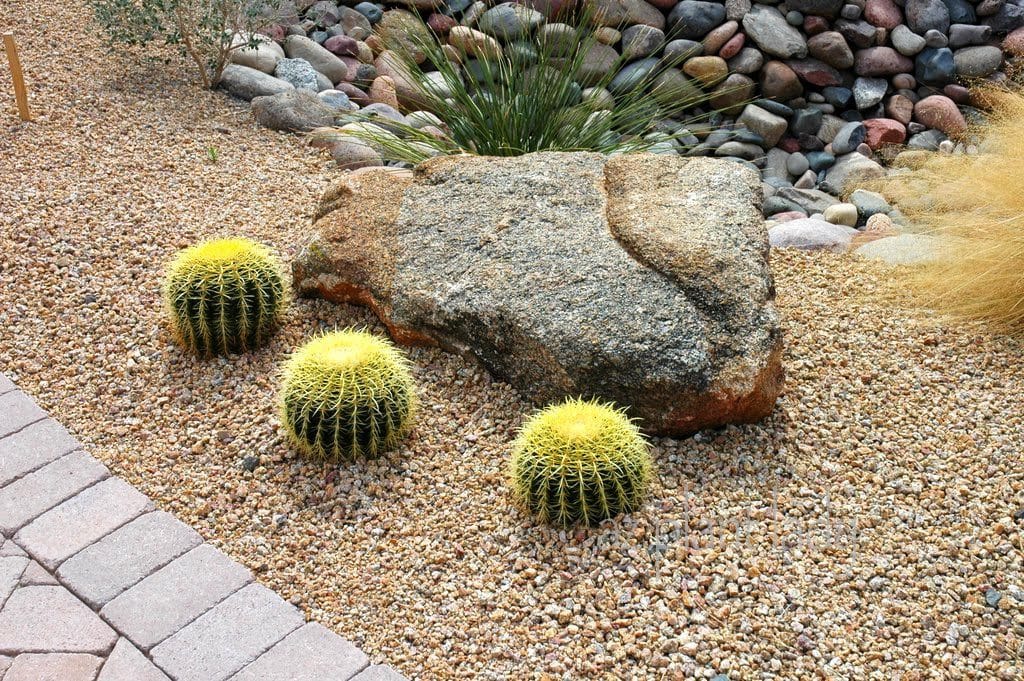
Eliminate or decrease the use of pesticides.
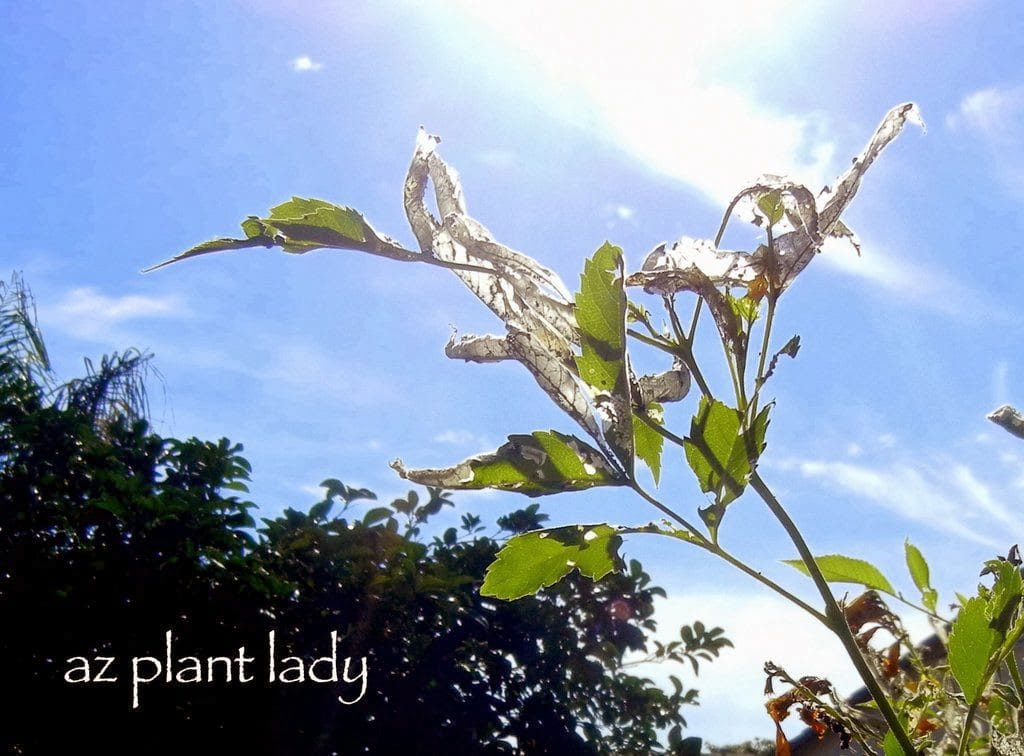
Leaf-roller caterpillar damage on Yellow Bells shrub.
Our first reaction when seeing insects damage on our plants is to run for the nearest pesticide in our misguided attempt to rescue our plants.
But, did you know that most plants can handle some damage from insects without any problem?
In fact, once damaging insects take up residence in our favorite plants – soon after new bugs come along that devour the bad bugs.
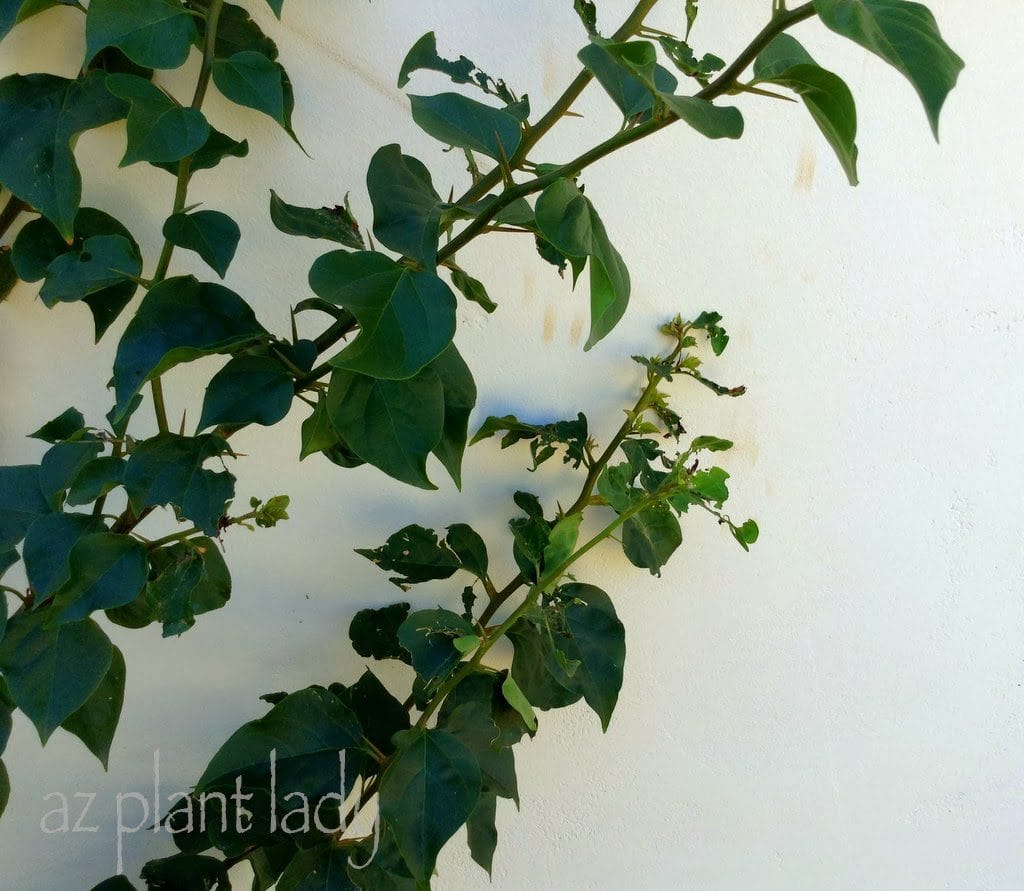
Bougainvillea Looper Caterpillar damage.
If you see something is eating the leaves of your plants, you have several options that are not harmful to the environment:
– Ignore it
– Prune off the affected foliage
– Pick off the insects (or spray off with water).
– Apply an organic pesticide such as insecticidal soap or BT (Bacillus thuringiensis).
You can also help to prevent damaging insects by planting ‘companion’ plants, which bad bugs do not like. For example, planting garlic around roses helps to keep aphids away.
********************
I hope you have enjoyed this series of posts on sustainable landscaping. My hope is that I have helped to inspire you to make some changes to your landscape to make it more sustainable.
I’d love to hear your thoughts or any ideas that you have done in your own garden to make it more sustainable.
For a complete listing of these posts with links, click here.


